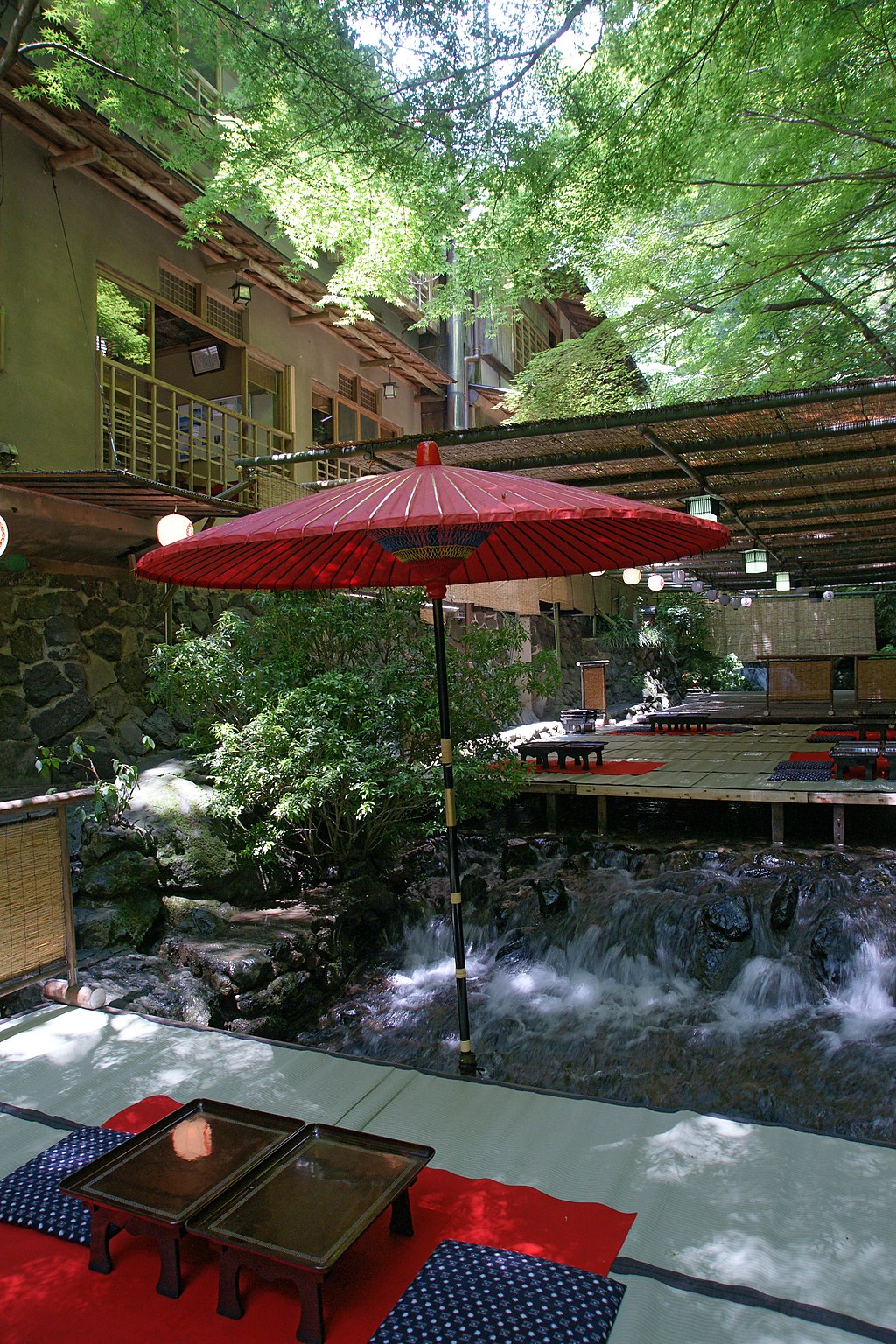Jul 24, 2017
The Singular Summer Pleasures of Kawadoko Dining

There has always been something seductive about waterfalls. There is the metronomic sound of the water tumbling into basin pools and the mesmerizing sluices of water cascading down rock cliffs. Architect Frank Lloyd Wright built one of his most famous houses atop a waterfall in the woods of Pennsylvania. So why not combine one of people’s favorite things – waterfalls – with another favorite thing – eating?
There is a restaurant in the Philippines at the base of a spillway where diners can enjoy a casual meal with water flowing under their feet and being splashed by pounding water. Japan does not go that far but you can find many Kawadoko restaurants in Kyoto, a region well-lubricated by rivers, including one that serves meals atop an entrancing hydro-spectacular.
Kawadoko means “place at the river” and Kyoto’s Kamo River is the summer capital of waterside dining. The Kamo spills out of Mount Sajikigatake on its way to joining the Yodo River and continuing to Osaka. Outside of the rainy season it is a benign water course that can be walked across on stepping stones in some places.
A Restaurant Row Unique in Japan
But most of the walking is done on pathways carved on the riverbanks of the Kamo. Those banks are lined with restaurants and bars, many dozens of them. The weather heats up in Kyoto in the summer and the dining establishments build large wooden platforms where diners can eat and drink in the cool of the water’s edge. The proprietors are said to have begun this practice in the early days of the Edo period in the early 1600s and the tradition has survived to become one of Kyoto’s signature tourist attractions, known as Kamogawa Noryo-yuka.
Although there are individual variations among the more than 100 Kyoto restaurants taking part in Noryo Yuka, most adhere to the accepted rules of the game. The decks are open from May 1st until September 30th and food is served outdoors only during daylight hours. If it rains, and in evenings, serving takes place indoors.
Diners can choose among restaurants that offer Western style tables and chairs or traditional low tables where kneeling is necessary. Most of the decks are narrow affairs extending towards the water so patrons will be eating in close quarters. In such cases it is appropriate to consume the food mindfully without making noise or imposing on a neighbor. The playing of musical instruments or singing on the decks is forbidden. Anyone can dine on the decks but the popularity of Noryo Yuka usually demands an advance booking. Do not make such choices lightly as canceling a reserved table on the appointed day of the meal is considered poor manners.
Kawadoko Dining Beyond the Kamo River
Kawadoko is not confined to the Kamo River. Kibune is a picturesque mountain village northeast of the city. The higher elevations and energetic waters of the Kibune River deliver a double dose of relief from the hot and humid Kyoto days. The Hirobun erects its wooden decks directly above cascading waterfalls. A thatched roof, paper lanterns, tatami mats and low slung wooden tables complete the kawadoko experience.
Takao is a small village tucked into a forested mountain valley one hour north of Kyoto by bus. Its Kozanji Temple lays claim to starting tea cultivation in Japan. The Kawadoko in this natural setting takes place along the Kiyotaki River.
By 663highland (Own work) [GFDL, CC-BY-SA-3.0 or CC BY 2.5], via Wikimedia Commons


About the author